Incontinence is a word most people say quietly. For most people, it is discussed only with a Doctor, or never at all.
However, the studies that have taken place over the years never fail to shock people. The majority of studies have found that incontinence affects around 300m people worldwide. This equates to about 5% of the population. A huge issue is that due to the lack of talk about it, there may be many more people suffering from incontinence than has been found. To date, it is estimated that around 7 million people in the UK have urinary incontinence (5-10% of the population). The fact that many do not even see a Doctor means this proportion could be even higher.
The infographic below shows the partition on a population of 50 million people:
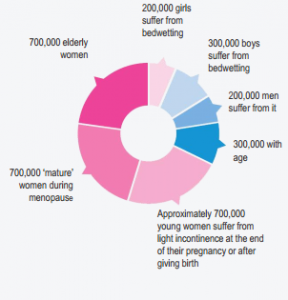
Image provided by Ontex Healthcare, (September 2018)
Yes, it affects more women. But don’t forget about the men.
As you may expect, incontinence does affect more females than males. Incontinence affects roughly twice as many women as men. Combined faecal incontinence and urinary incontinence affects 10% of women and 5-6% of men in the community, increasing to almost 50% in nursing home residents.
This increase in prevalence is due to common changes in a woman’s health and body, such as pregnancy, hormonal changes, menopause and ageing. In pregnancy, the expanding uterus puts pressure on the bladder. The muscles in the bladder sphincter and the pelvic floor muscles can be overwhelmed by this and become weakened. Increased uterine weight is another huge important factor affecting the frequency of leakages during pregnancy. During childbirth, these muscles are further stretched and weakened, leaving many women suffering from stress incontinence.
Over 10% of men over 65 admit to having urinary incontinence to some degree. Most commonly, male bladder problems are caused by Prostate Cancer, Prostate Surgery, neurological disorders and nerve damage. Many men suffer from benign prostatic hyperplasia, a non-cancerous condition that causes prostate enlargement. Constipation, obesity and bladder infections are other complications that can lead to male incontinence symptoms.
Are You a Man with Incontinence
Post a Question on Our Forum
“I’d Rather Keep It a Secret”
Although we have rough statistics, the fact is that it is hard to estimate how many people have incontinence, as it is barely spoken of. Fewer than half of adults with severe urinary incontinence seek help from healthcare providers. One study found that men would rather admit to sexual impotence than symptoms of incontinence. Women are a little bit more open about the issue, sharing these problems on websites such as “Mumsnet” and “Women’s Health”. However, still only 1 in 5 women claim that they seek help for incontinence issues, the rest keep it a secret. We clearly still do need to spread incontinence awareness for both sexes.

What is the Most Common Type of Incontinence?
Stress incontinence is the most common incontinence type, often brought on by pregnancy, menopause and other problems.

Symptoms of stress incontinence are the following:
- Experiencing leakage when you exercise
- Experiencing leakage when you cough, laugh or sneeze
- Leaking when standing up
- Leaking when lifting something heavy.
Author and runner Rose George shared her experience of stress incontinence an article in the Guardian. She states, “I know it happens from discussing it with my female club mates. I know it happens from running forums online. And I know it happens because it happens to me.”
Surprising Fact: More people suffer with bladder problems than with asthma, diabetes or epilepsy!
The Risk Factors For Incontinence Include:
- Being a senior or in later years
- Obesity
- Hysterectomy
- Pregnancy or childbirth
- Mobility
- Diabetes
- Dementia
- Menopause and hormone replacement therapy
- Infections
- Comorbidities
In general, individuals of child bearing age are more likely to have slight incontinence, whereas senior individuals are much more likely to have severe incontinence. The increase in prevalence around the age of 50 is likely to be due to Menopause.
Recommended Heavy Incontinence Products
Buy iD Expert Belt on Incontinence Supermarket
- Belted design for security
- Designed for heavier incontinence
Range from £7.98 to £11.05
Buy Attends Pull Ons on Incontinence Supermarket
- Feel like normal underwear
- Close comfortable fit
Range from £10.11 to £21.19
Buy TENA Slip on Incontinence Supermarket
- Fixation tabs
- Comfortable and close fit
- For heavier incontinence
Range from £10.69 to £19.94
Recommended Light Incontinence Products
Buy Lille Suprem Light on Allanda
- Small in size for discretion
- Waterproof back sheet
Range from £0.99 to £4.35
The Impact of Incontinence on the Population
Studies find that incontinence influences four important areas:
1. Sexuality
2. Existing partnerships
3. New partnerships
4. The search for professional help

Incontinence is a threat to people’s autonomy and incontinence. This toll on mental health is not only apparent for incontinence sufferers, but also for carers. As authors Cassells and Watt claim in their article, "Carers of people with incontinence have reported sleep deprivation, depression and social isolation". They state “It is a both a caregiver burden and predictor of institutional placement.”
Depression and incontinence is also a large issue on a worldwide scale. In a Canadian study of women with urinary incontinence, more than 15 percent had experienced major depression in the previous year.
Originally posted 2019-02-07 13:33:06.

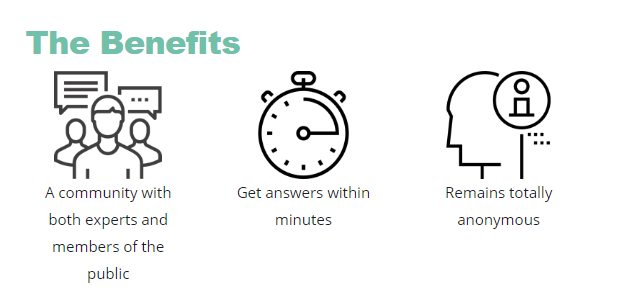

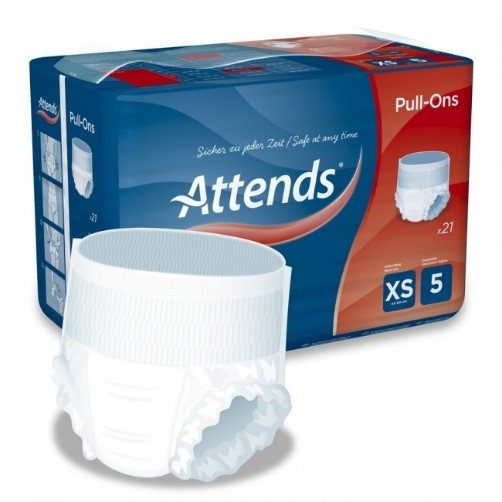


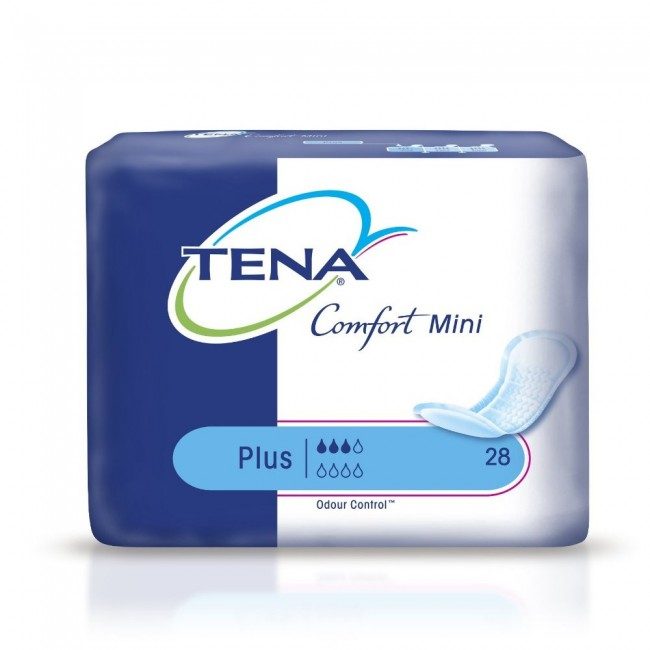



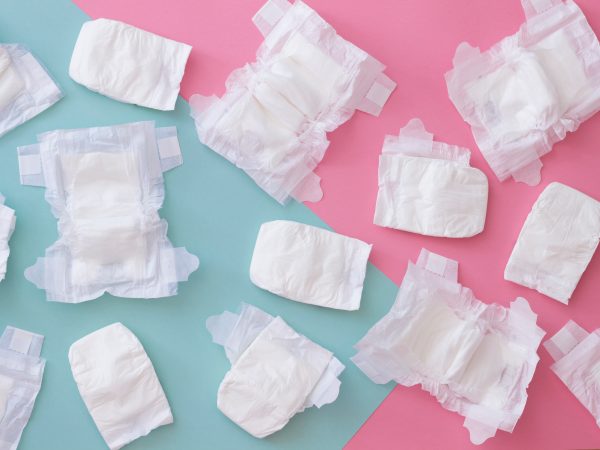








Pingback: Millions of women like me struggle with incontinence – the lack of public toilets is humiliating